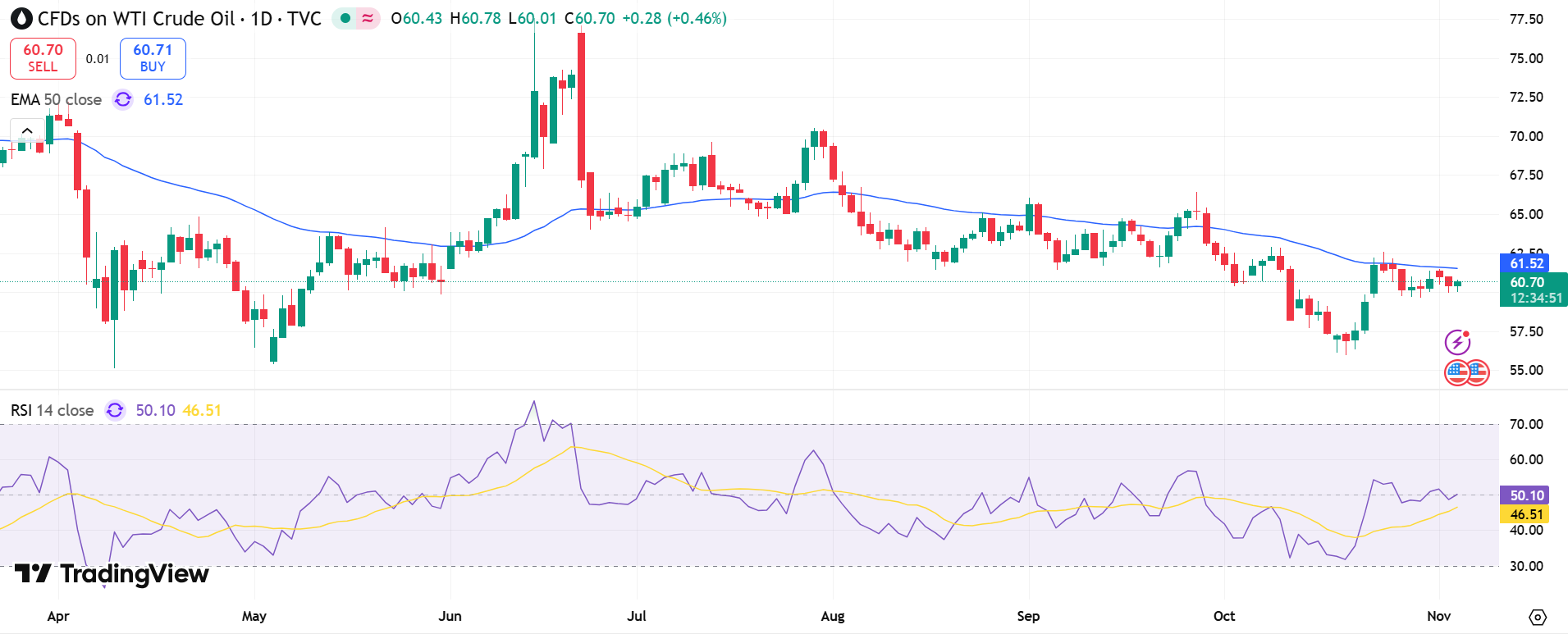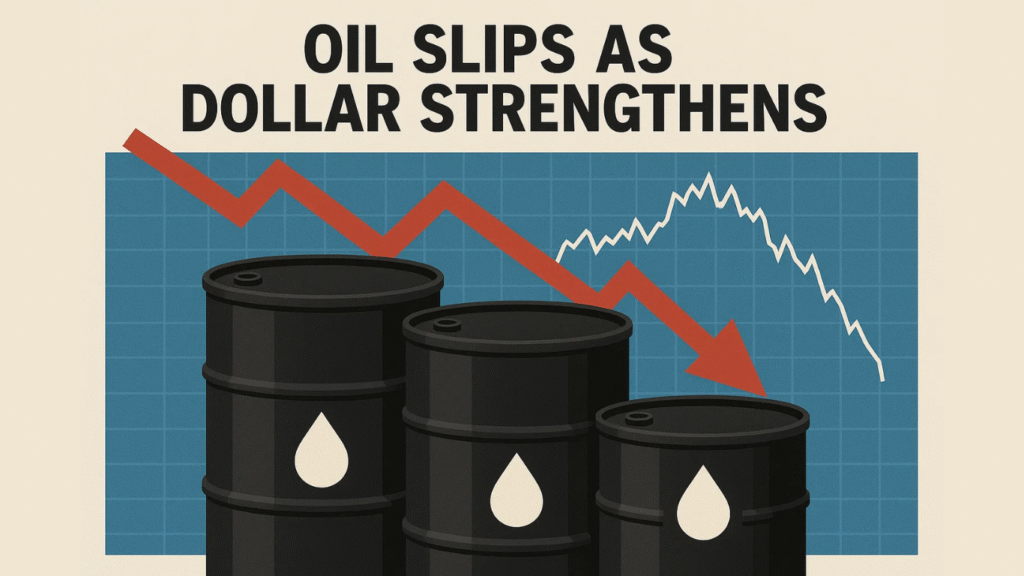Oil prices edged lower on Wednesday as investors retreated from riskier assets, pressured by a surging U.S. dollar and fears of weakening demand. Brent crude futures slipped 6 cents, or 0.09%, to $64.38 a barrel by 07:06 GMT, while U.S. West Texas Intermediate (WTI) dropped 7 cents, or 0.12%, to $60.49. The decline follows a near two-week low in the previous session.
Analysts at ANZ Bank noted that investors’ appetite for energy assets weakened sharply amid a broader “risk-off” environment. Asian markets tumbled, and volatility across global exchanges reached seven-month highs, driven by a tech-led selloff on Wall Street that underscored concerns about stretched valuations.
The U.S. dollar index, which tracks the greenback against six major peers, hovered near a three-month high, supported by growing divisions within the Federal Reserve over additional rate cuts. A stronger dollar typically pressures oil prices by making crude more expensive for holders of other currencies.
“Crude oil is trading lower as sentiment turned sharply negative, strengthening the dollar and weighing on prices,” said Tony Sycamore, market analyst at IG Group.
U.S. Stockpiles and OPEC+ Moves Weigh
Fresh data from the American Petroleum Institute (API) added to the bearish tone, showing a rise in U.S. crude inventories for the week ended October 31. Higher stockpiles often signal softer near-term demand, reinforcing the downward pressure on prices.
Meanwhile, the Organization of the Petroleum Exporting Countries and allies (OPEC+) announced plans to increase output by 137,000 barrels per day (bpd) in December. The alliance also decided to pause production hikes during the first quarter of 2026, a move analysts say will have limited short-term impact.
Key supply dynamics influencing the market include:
- OPEC output rose by only 30,000 bpd in October, down from 330,000 bpd the month before.
- Production declines in Nigeria, Libya, and Venezuela offset planned increases.
- Western sanctions on Russia and Iran have led to record volumes of oil in floating storage, preventing oversupply in physical markets.

Outlook: Balancing Supply and Demand Risks
Despite modest declines, oil remains trapped between conflicting forces. On one hand, robust U.S. supply data and OPEC+ production growth point to potential oversupply. On the other, geopolitical tensions and tight refinery margins continue to lend some support to prices.
Analysts warn that unless demand recovers and the dollar weakens, oil prices may remain subdued through the end of the year. For now, market participants are watching upcoming U.S. economic data and OPEC+ compliance levels for clearer direction.


